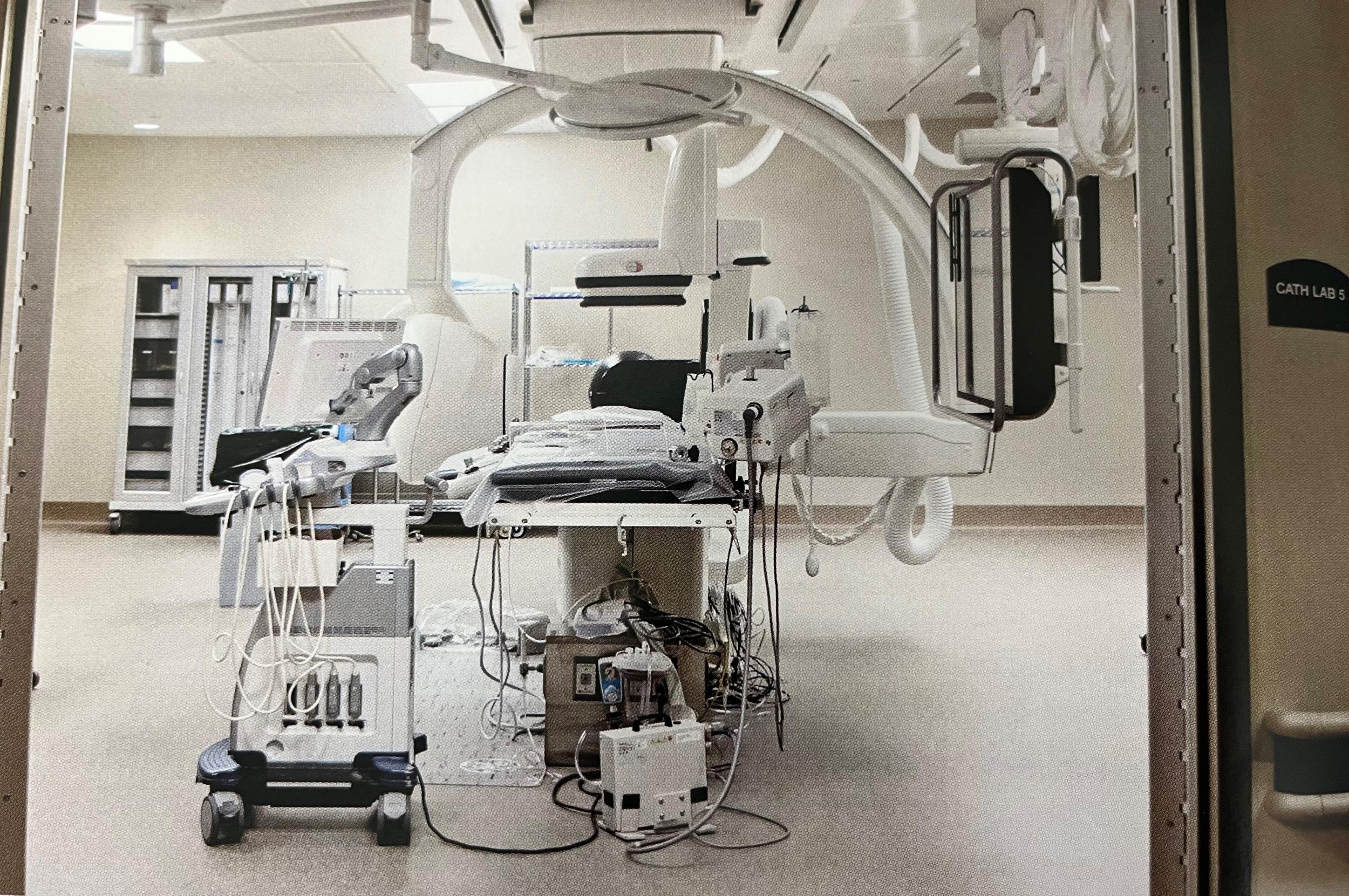Caring for patients’ cardiovascular health is one of the most important parts of Archbold’s mission. In recent years, we’ve expanded our heart and vascular services into outlying communities through satellite clinics and partnerships—and that expansion led to an uptick in patients seeking care at the Loudermilk Heart and Vascular Center. To keep up with demand, we launched a wide-scale renovation of the center last spring to expand our treatment capabilities and create a more comfortable environment for patients. The project concluded in early 2022.
“We’re fortunate to have some of the highest-quality heart and vascular providers and support staff in our region,” said Chris Newman, PharmD, MSHA, vice president of clinical services at Archbold. “Their reputation and desire to stay on the leading edge of minimally invasive cardiology and vascular procedures was the driving force behind this project.”
The crown jewel of the project is a new procedures lab, the center’s fifth. This versatile new addition will be able to accommodate a variety of services, including electrophysiology procedures.
GROWING FOR GOOD Our revamping of the Loudermilk Heart and Vascular Center also includes a top-to-bottom effort to transform the facility’s look, feel and capabilities that will change the way we provide cardiovascular care. Improvements underway or recently concluded include:
» Adding space to the nuclear stress test area and renovating its waiting room
» Expanding storage areas
» Relocating and renovating the cardiovascular ultrasound area
» Renovating and adding space to the cardiac rehabilitation area, which will allow us to start a rehabilitation program for patients with peripheral artery disease
» Renovating the holding area for cardiac catheterizations and interventional radiology procedures
» Updating the interior and adding space throughout the Loudermilk Heart and Vascular Center
Another exciting aspect of the project is the addition of a private lounge for patients who undergo transradial heart catheterizations. This type of catheterization involves accessing the heart via the radial artery through a small incision in the arm rather than through the femoral artery with a small leg incision. The transradial approach allows patients to sit up sooner and go home earlier. In the new lounge, they’ll be able to relax in a recliner while recovering instead of lying in a bed.
Christopher Daniels, MD, FACC, FSCAI, interventional cardiologist, credits the Archbold board of trustees, administration and cardiovascular providers for having the vision to enhance the Loudermilk Heart and Vascular Center—and for bringing that vision to life, despite the COVID-19 pandemic. “The people we serve can be proud to have an outstanding organization like Archbold in their backyard,” Dr. Daniels said. “We’re committed to caring for them in every way.”
MAKING WAVES Interventional cardiologists and interventional radiologists at Archbold’s Loudermilk Heart and Vascular Center are taking advantage of advances in technology to help patients avoid surgery. A standout example is a procedure that uses sonic waves to break up major calcium deposits, which can build up in arteries and prevent blood from reaching the heart.
“We’re able to treat more patients using minimally invasive techniques,” said B. Clay Sizemore, MD, FACC, FSCAI, interventional cardiologist at Archbold and Cardiovascular Consultants of South Georgia. “Archbold has always enthusiastically embraced new technologies and invested in facilities that allow us to do so. We recently became one of the first centers in South Georgia to bring intravascular lithotripsy [IVL] to the cardiac catheterization lab. This allows us to treat heavy calcification in the heart arteries, which previously required specialized equipment or surgery at a center that performs bypass surgery.”
To perform IVL, an interventional cardiologist makes a small incision in the patient’s arm or leg and sends a catheter to the site of calcium buildup. Emitters on the catheter’s tip create pressure waves that fragment the calcium. That makes it easier for the physician to inflate a balloon, known as angioplasty, to open the vessel and place a tube called a stent for blood to flow through. Thanks to IVL, we can now treat patients with heavy calcification locally instead of having to transfer them.
